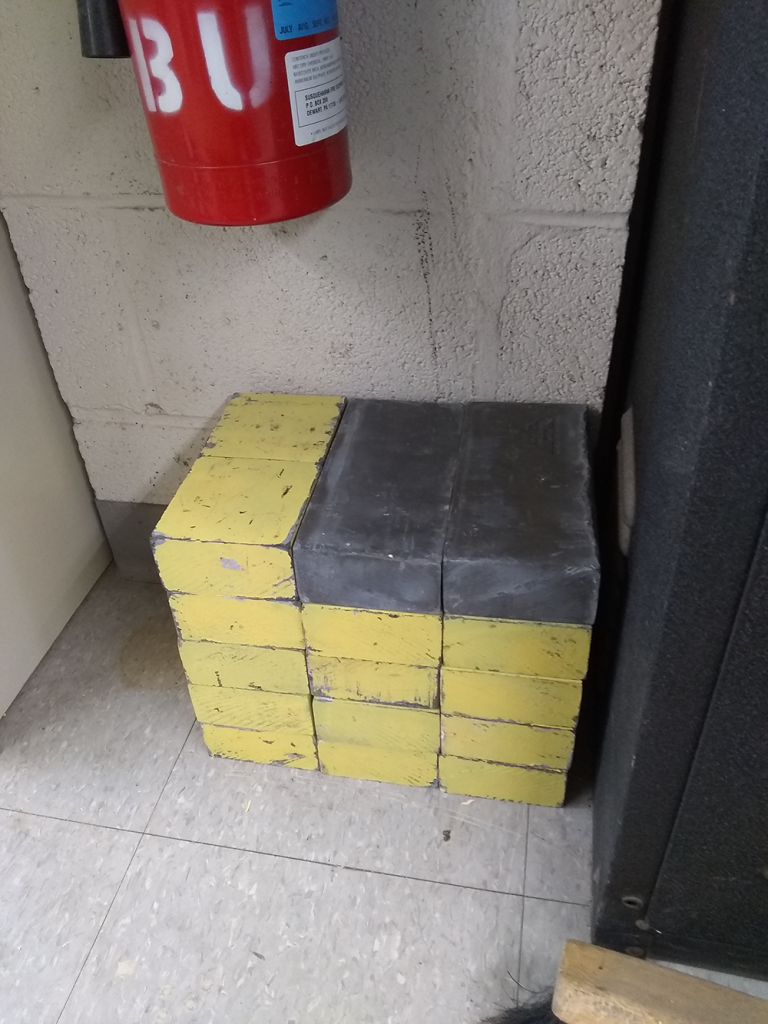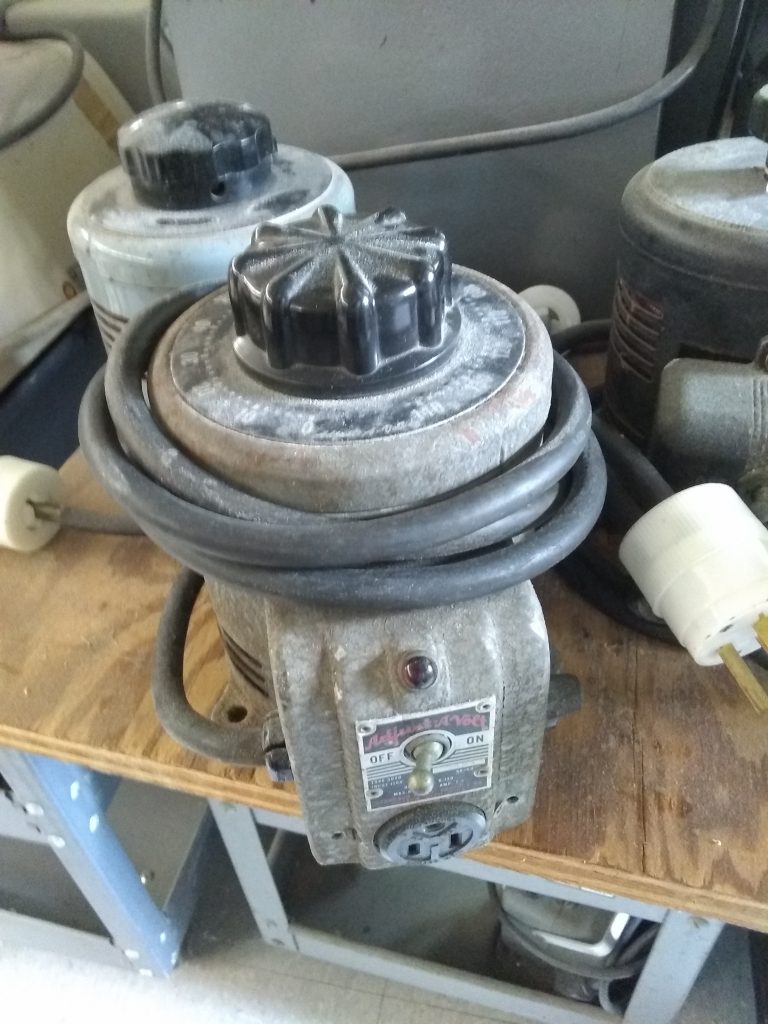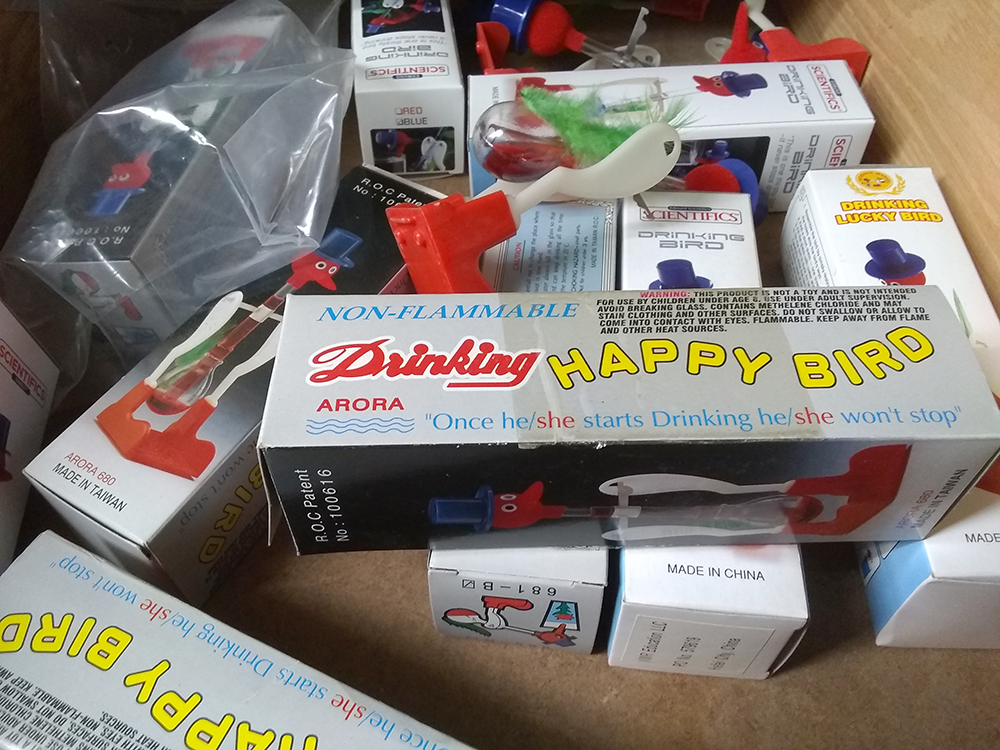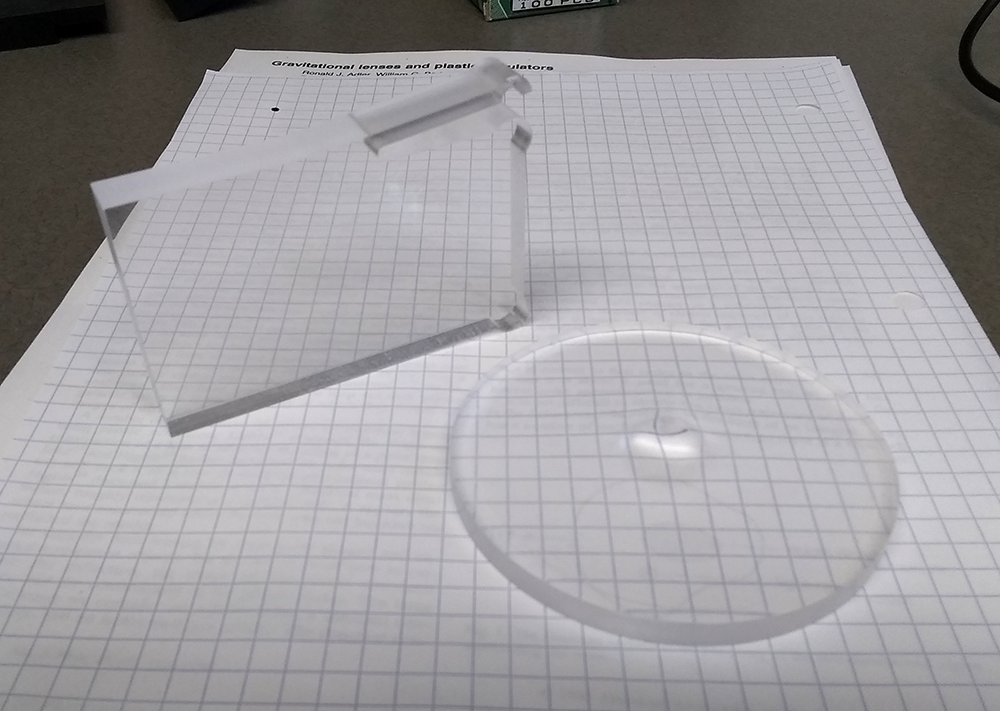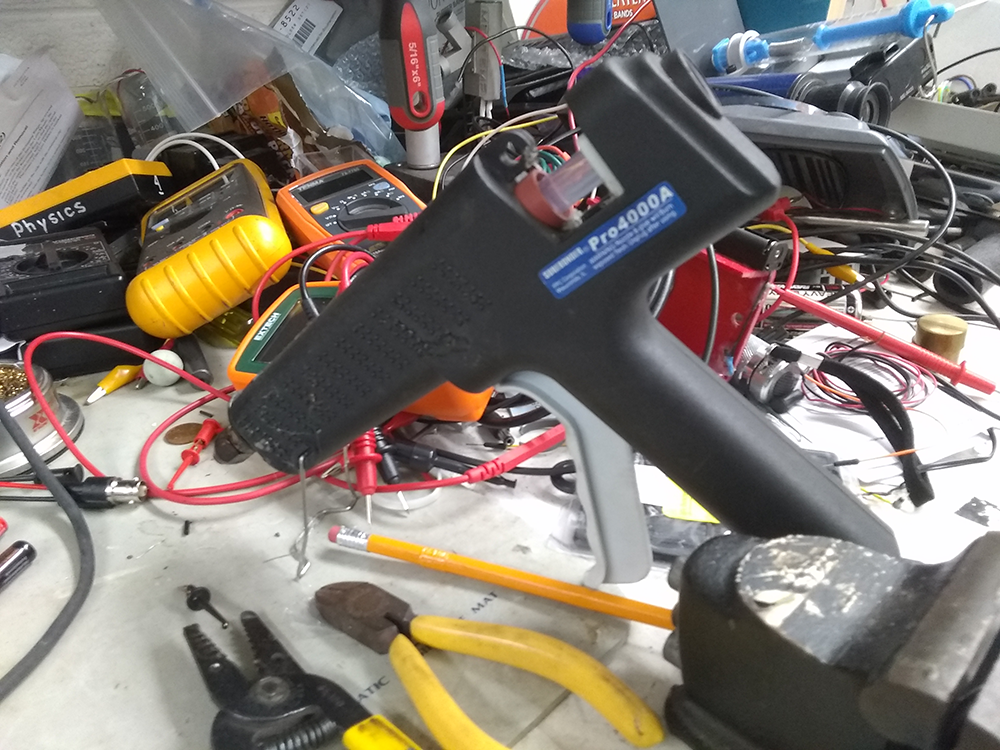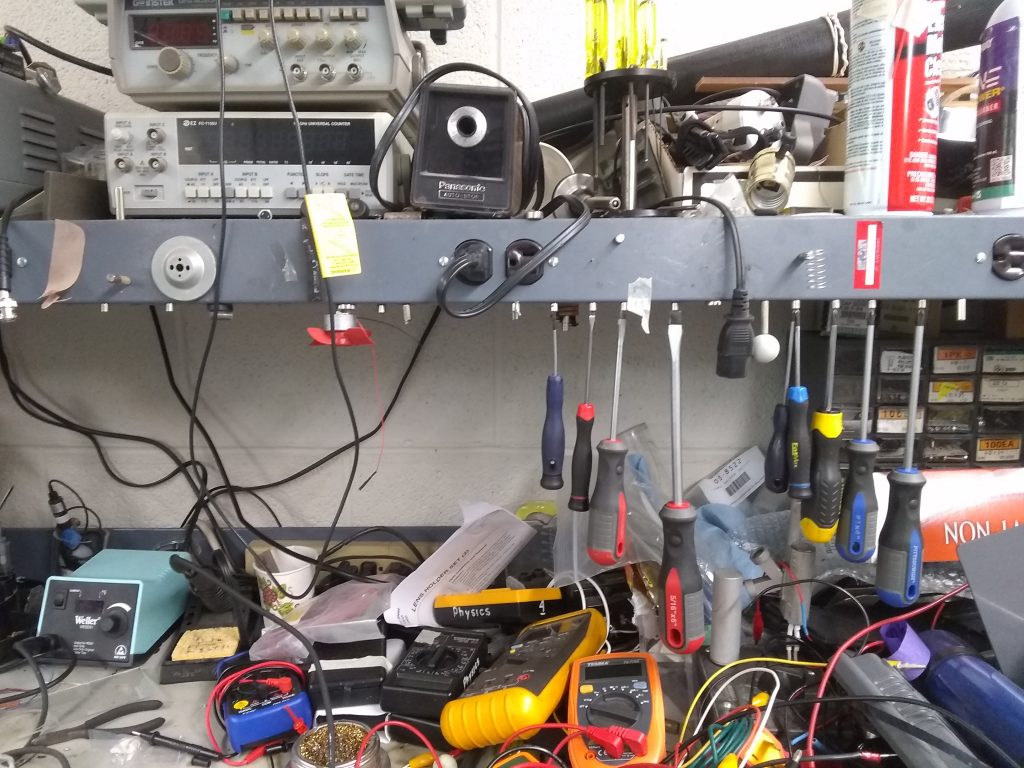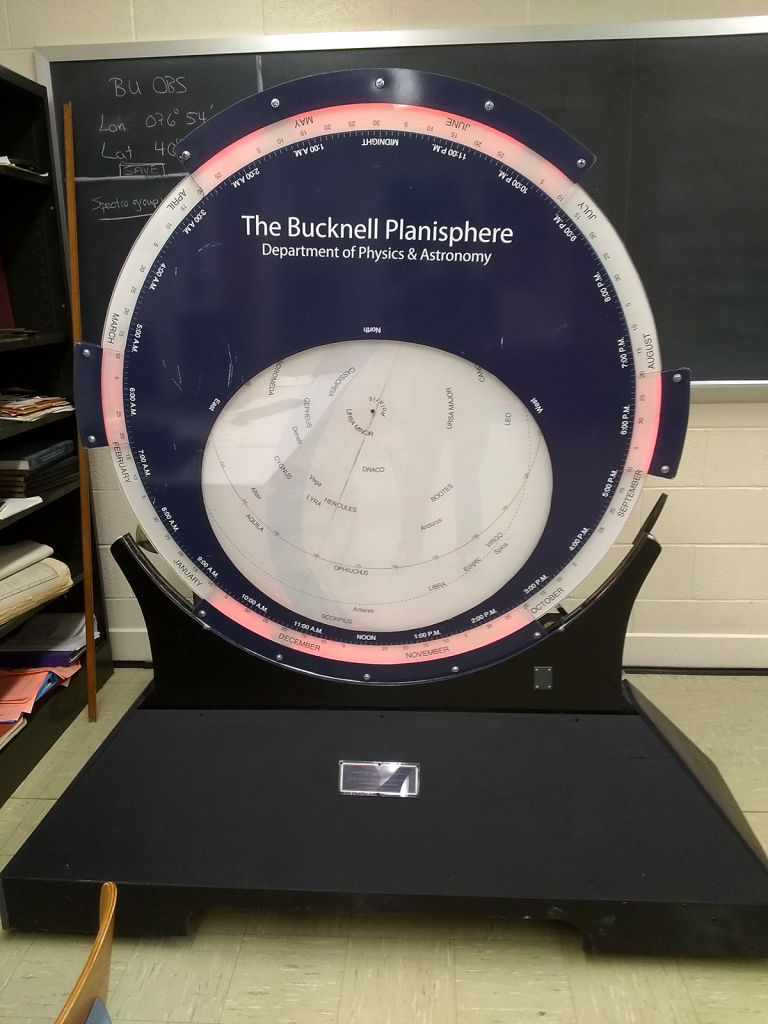
Astronomy at Bucknell is not just for the undergraduate students, but for the wider community, too. With a whole slew of telescopes to explore the skies, the department sometimes runs family nights and other outreach programs. Local families, summer camps, and others can – weather permitting – have the opportunity to explore constellations, deep sky objects, planets, and sometimes even the crater-riddled surface of the moon.
For those at home, an ordinary pair of binoculars works quite well for that last one. Pick a night when the moon is between new and full, and look to the transition zone between the light and dark sides. The light rays raking across the surface dramatically emphasize the texture. The full moon’s straight-on illumination is less compelling, and, well, there’s not much to see on the new moon.
In order to help explain the skies to the public, the Observatory has a planisphere, built by one of the University’s Presidential Fellowship students with the help of the shop techs. A flattened portion of the celestial sphere rotates, enabling a view of the major constellations at any day and time throughout the year. Polaris, at the center, stays steady while the rest of the sky spins about.
For added excitement, a series of colorful LED lights ring the perimeter, making the stars and imaginary constellation lines glow in the etched acrylic.
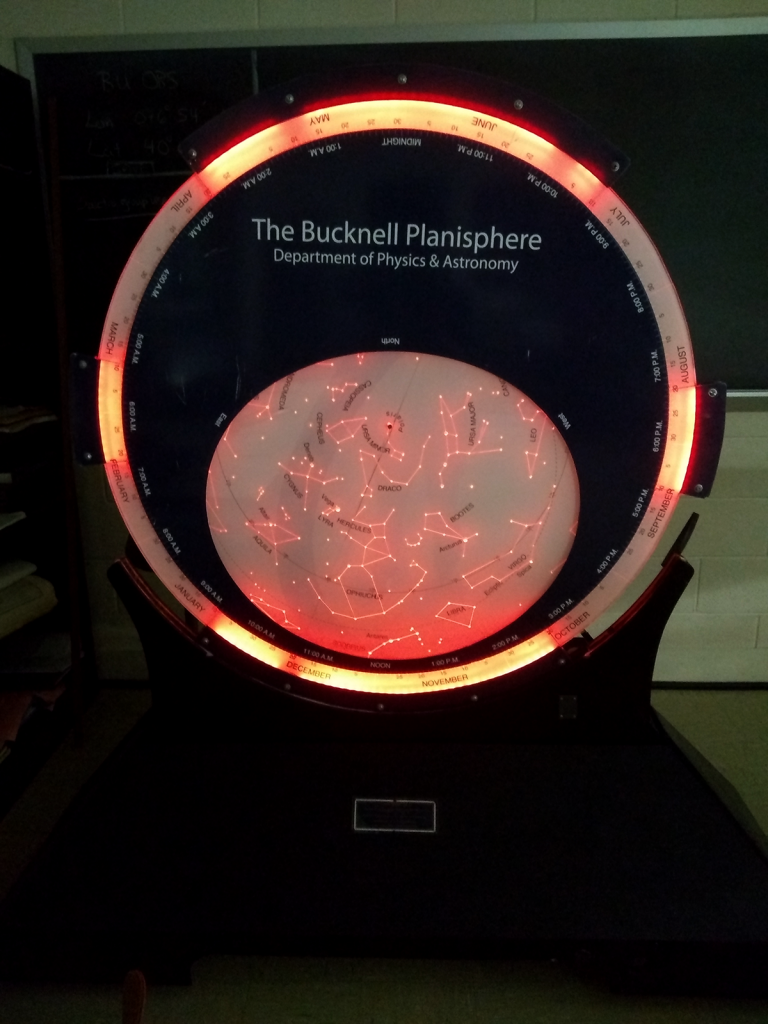
It’s pretty cool.
